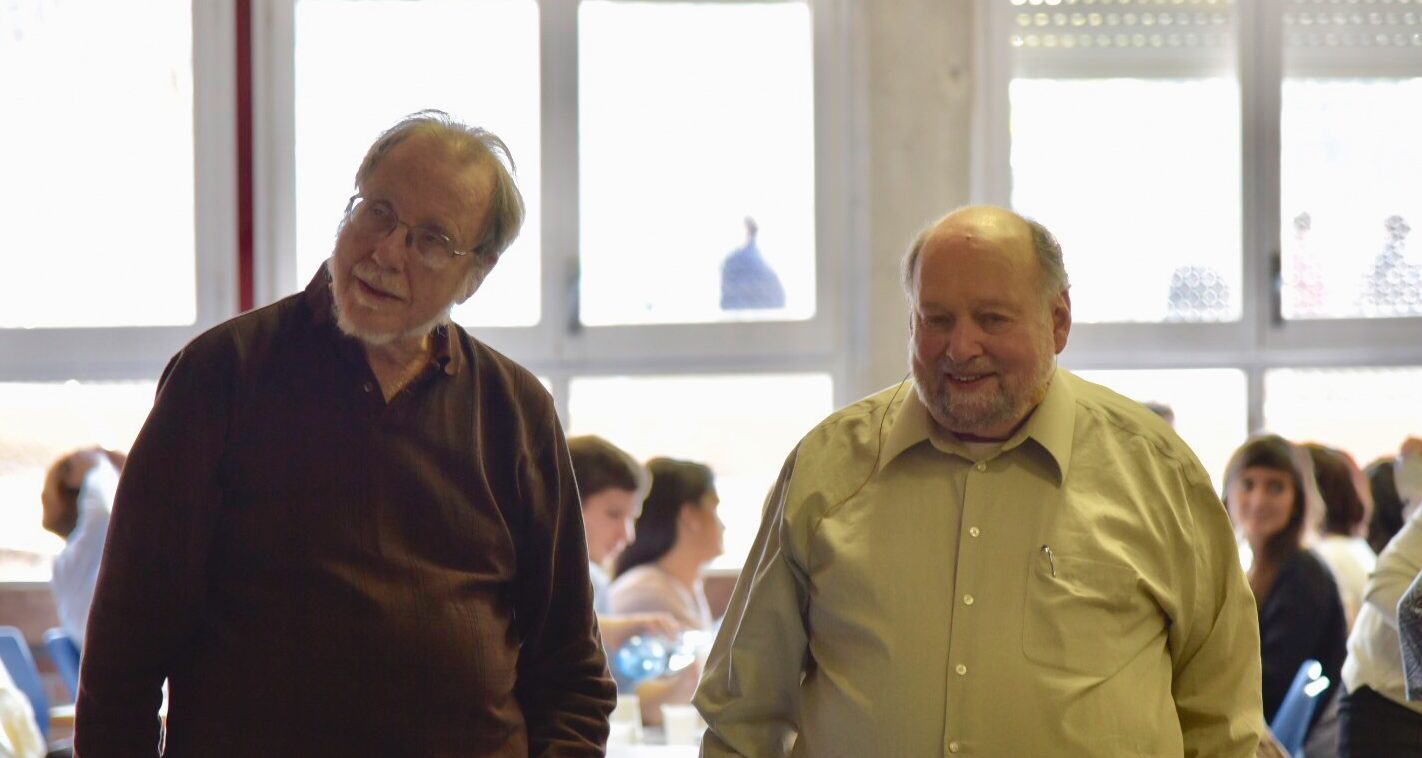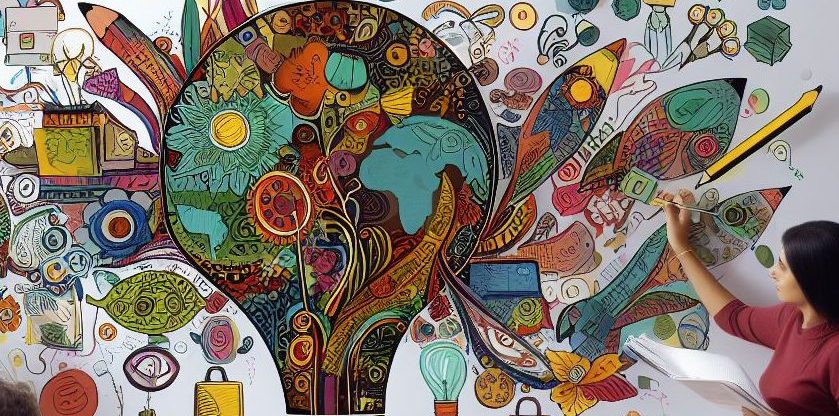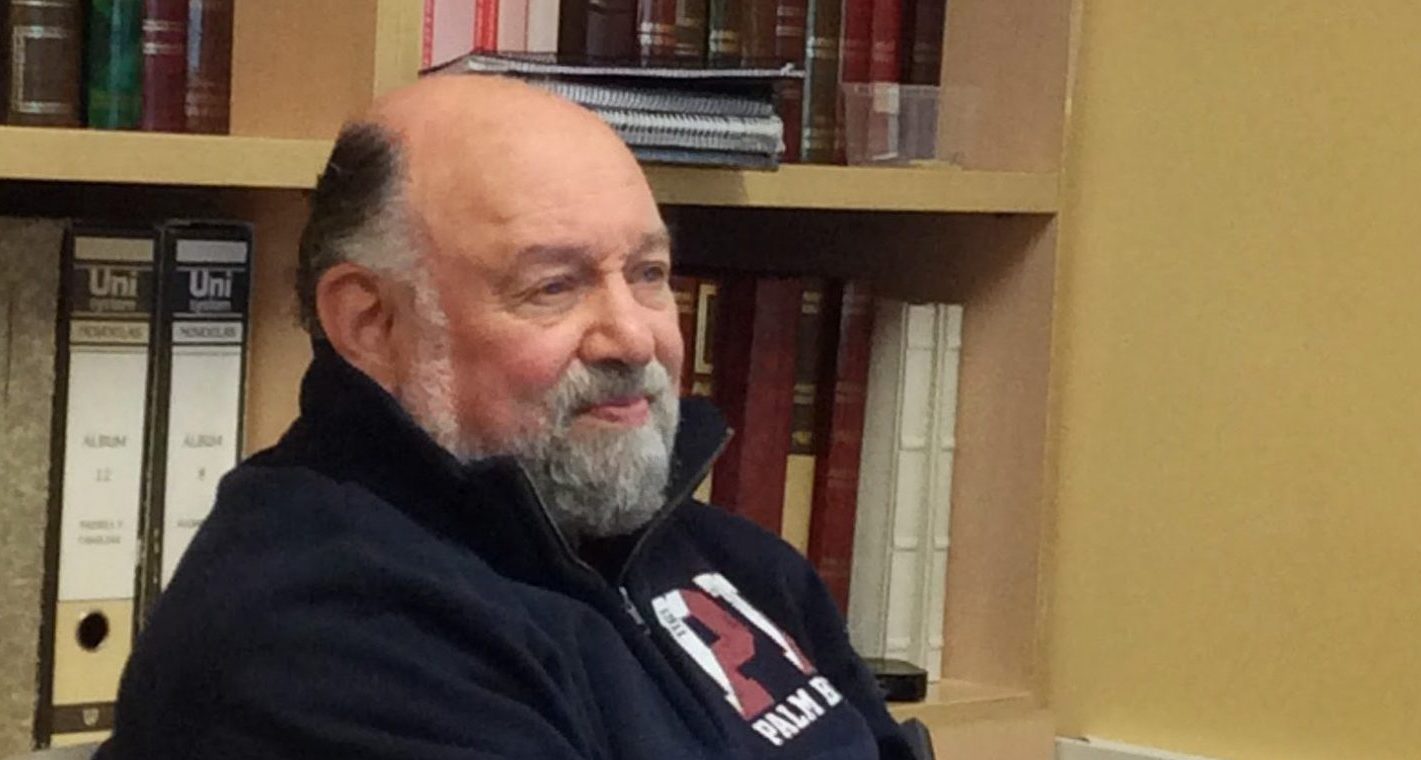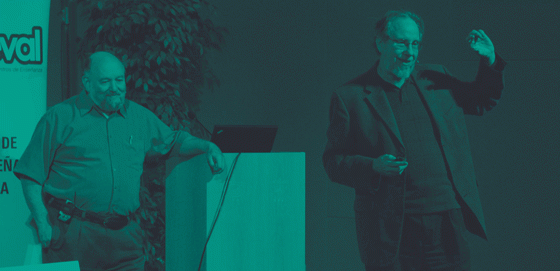by Ana Moreno Salvo
Robert Swartz (1936 – 2022) was a Doctor of Philosophy from Harvard University, professor emeritus at the University of Massachusetts, Boston and creator, together with Sandra Parks, of the Thinking Based Learning (TBL) methodology, which replaces teaching based on memory with teaching based on active thinking. She founded and directed the Center for Teaching Thinking (CTT), dedicated to promoting this methodology in the United States and Spain. For the past thirty years he has worked with teachers, schools and universities, internationally, on projects of teacher development, curriculum restructuring and education through the infusion of critical and creative thinking in the teaching of content.
We had the opportunity, on several occasions, to talk with Bob, who shared with us, not without passion, the great work he had been doing over the years.
Good thinkers
Bob’s right-hand man on this whole project was David Perkins, with whom he coincided at Harvard. As he says, “We were both very sensitive to the fact that most people don’t think straight. They make quick decisions, they make snap judgments, and they make mistakes.” What they realized was that most people make decisions this way. They think about the good things, and they don’t ask themselves, is there a downside? They realized that this was true of most of the kinds of thinking that people did, and they thought it would be a good idea to help them develop the habit of asking, not only if there are any good things, but also if there are any negative consequences, i.e., to learn how to think better.
It was about figuring out how to teach students so that they learn, early on in their schooling, how to really think more carefully when making decisions, when solving problems, when thinking about how something works, and so on.

Creative thinking and critical thinking
Bob considered that thinking creatively is one of the different types of thinking that we need to learn to do well in different circumstances. It involves coming up with new, original, creative and different ideas. The mere fact that you come up with these creative ideas is the practice of creativity. Critical thinking, on the other hand, consists of trying to think about ideas and asking ourselves if they are correct, if what we say is true or true. In creative thinking, we try to come up with something new and original, interesting, and in critical thinking we ask ourselves, are those creative ideas, good ideas? As Bob used to tell us, he liked to work creative thinking into what he called productive creativity, which is coming up with new and original ideas that work, that move our lives forward, etc. Which means applying critical thinking to the creative thinking that you have practiced.
For example, if you have a problem that no one has been able to solve or that is a new problem that has just arisen and needs to be solved; for that, you will have to use some creative thinking, just to come up with some original ways to solve that situation. Then critical thinking will have to be exercised to determine if the proposed solutions are going to work.

Bob emphasizes the idea of productive creativity when we are trying to come up with new ways of doing something. We’ve tried all the old ways and they don’t seem to work. So we try to exercise creativity, but we want to make sure that the creative ideas we come up with are productive.
The keys to teach how to think
Bob told us that when he started in the United States, in Massachusetts, he was a faculty member at a university and that limited him. He wanted to go to schools all over the world, work with their teachers, and show them everything he had discovered and what he had learned from other teachers to make it all work. He intended to help them put this into practice in their classrooms, to help teachers learn how to teach children to be better thinkers.
As he got permission from his university, he started to travel and turned the schools into what he called “Thinking Schools”. He created the “Center for Teaching Thinking” and a certificate to certify that these schools, in addition to content, taught thinking.

Between 80% or 90% of their teachers teach all their content through thinking. They developed a technique, TBL (Thinking Based Learning), for teachers and their students to learn how to do this, and it really works.
The focus of this technique starts with thinking about what real learning is. Teachers should pass the challenge to their students and ask them, how are you going to learn this, what questions do you need to know how to answer to get to think about it well and come to an acceptable conclusion? Teachers can work together and find the learning to think technique that will allow them to transform learning into thinking to learn.
They should not provide the strategy for thinking to the students, they should challenge them to find those questions they need to answer in order to think about the problem at hand. Make them aware that they are thinking well, that the answer will come and in the end the thinking will be good. They have not memorized it from a textbook, but have thought it through conscientiously to come up with good answers. For example, the TV in your house breaks down, and you ask yourself the question why, why did it stop working? This is a good question, and students are interested in it, and they try to figure it out. To do this they have to develop a plan. This can be done with a lot of content, it’s about challenging students to figure out the cause of some event, to be careful, and to think about what possible causes have caused the TV to stop working.

In this way students come to develop what Bob called a thinking map. A set of questions or a set of procedures that they think need to be followed, things to figure out to decide why something happened.
There are other types of thinking such as problem solving, decision making, predicting consequences. Students realize that they themselves can learn content and explain it using the thinking maps that they themselves elaborate. They learn to be guided in their thinking, and to do it carefully and well, so that the conclusion they reach, the decision they make, is something they can feel not only proud of, but that they know is right.
Creative thinking in other thinking skills
According to Bob, we don’t need creative thinking for all types of thinking, but that doesn’t take away from the fact that it is extremely important. In fact, he considers the great successes we humans have had in advancing the ways of life in the development of our great cities has been because of creativity.
Not knowing how to do something and then learning how to think creatively, coming up with new ideas, figuring out if the creative ideas are going to work, and putting them into practice.

Our lives, as we live them now, are thanks to our ability not only to generate interesting creative ideas that may or may not work, but to promote productive creative ideas that we later discover will work. That’s humanity.
Bob wondered, what can we do in our classrooms to help students develop productive creativity, and be able to do it and want to do it, be motivated to do it well?
It may sound easy, but is it really?
Naturally, these changes do not happen overnight. There is a safety valve, a set of processes that are often called metacognition, i.e. the ability to think about your thinking, about how I have thought, to decide what questions I should ask.

Teaching good thinking involves asking students to develop their plan, then implement it, see what happened, thinking about it step by step and asking themselves if it worked.
If it hasn’t, a new question must be asked: how could we do it differently? The teacher must help the students learn on their own, to do it well. That way they learn how to learn and after doing it a couple of times with the content of the curriculum, the teacher can disappear. They realize that they can do it by themselves, and they repeat it until they don’t need to practice anymore. This is how the skill or ability emerges in, for example, making decisions effectively or thinking creatively-productively or any other kind of thinking. They learn it at school and then, after practice, it becomes an automatic way of thinking.
Teaching good thinking involves: developing and implementing the plan, seeing what happened and asking yourself if it worked.
A good lesson that develops some kind of creative thinking
All students need to be creative thinkers; if they want to be practical, if they want to help change the world, they need to learn how to develop productively creative ideas that solve problems, situations, and so on. Bob briefly explains an experience that took place in a school: the teacher came up with the idea of having the students imagine a person who is dedicated to helping other people with problems, for example a person lost in the desert, or who has broken a leg. He told them, you have to come up with creative ideas that will save these people’s lives, I want you to use what you have learned in school. One student explained, someone is climbing the Matterhorn in Switzerland and has broken his leg. But he carries a little box in his pocket like a green button, he presses it, and it sends a signal to base camp where a drone starts buzzing and goes up. It is a contraption with the medical supplies needed for such cases and flies to a point that emits a signal given by the first box. The injured person presses two more buttons and the packages at the bottom rotate. One of them opens, and a set of supplies for someone with a broken leg makes its way to this person. There are bandages, splints, folded crutches that you can use to put under your shoulders and down the mountain and they are saved. The students in the class said to him, I don’t think it’s going to work, we’ve studied about Switzerland, about the mountains, the Alps, etc., and we’ve learned that on a mountain like the Matterhorn it’s very windy. The fact is that they tried to do it, they tried to fly the drone, all the students in the group were convinced that it was going to work, because using their laptops they figured out the wind currents.
These kids were learning not to make snap judgments, even if it seems right, they need to figure it out in reality. This anecdote was, for Bob, a wonderful example of the use of TBL, an example for all of us.









